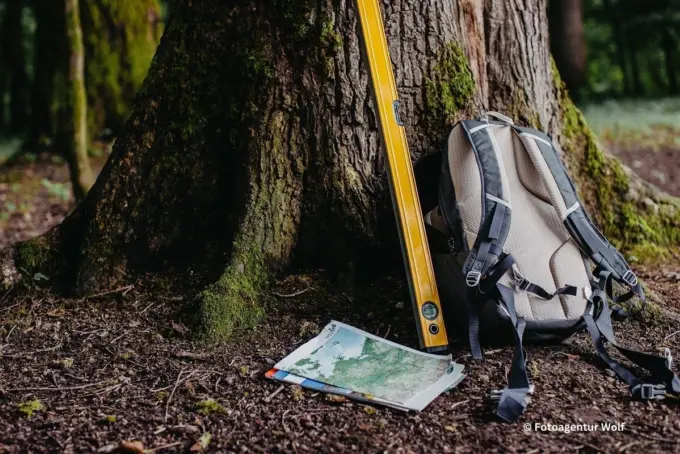Privacy & cookies
 Guest author Benjamin Suthe | April 2024
Guest author Benjamin Suthe | April 2024
In his guest article, Benjamin Suthe writes about how comfort hiking trails can be an attractive option for all age groups and needs.

What are your associations with comfort hiking trails? This was a question during the presentation at the MAQNIcademy. The answers given, such as "wide and level paths, sufficient seating, good signposting and safety" reflect the important basics of comfort hiking trails. But what exactly is behind this concept and what potential does it harbour for active tourism? In this article, we get to the bottom of the most important questions.
At a time when demographic developments are forcing a rethink in the design of hiking trails, comfort hiking trails are becoming increasingly important. The population is getting older, but remains mobile. However, not everyone is able to tackle steep peaks or narrow paths. This is where comfort hiking trails come into play. Their aim is to create trails that are accessible to a wide range of people. Families, senior citizens, people with disabilities - they are all entitled to comfort, service and accessibility.

An important aspect of comfort hiking trails is the availability of information. This should give guests the opportunity to assess whether the trail is suitable for them before their visit. Difficult sections can be precisely localised and appropriate information provided. The aim is to provide comfort-orientated target groups and also locals with additional information and thus make more hiking trails available.
But which target groups can and should be addressed? The answer is complex. Families, senior citizens and people with disabilities benefit from barrier-free and comfortable trails. But nature and active holidaymakers who value comfort and safety will also find an attractive offer here. In short: comfort hiking trails are aimed at everyone who wants to experience nature.
A look at the criteria shows that the aim is to minimise existing hazards and make the paths accessible for different user groups. This means avoiding steps or roads, but also ensuring that the paths are accessible for pushchairs and wheelchairs. Rest facilities and infrastructure also play an important role. This is why these criteria are recorded and documented as part of an inspection. A spirit level is often required to record the existing gradients.
Best practices already exist and show that careful planning and implementation are crucial. The involvement of local stakeholders and tourism organisations, the consideration of ecological aspects and the continuous evaluation of the trails are just some of the key factors for success.
Initially, discussions should be held with all tourism stakeholders in the regions. In most cases, there are already numerous hiking trails in the regions that could fulfil the criteria. In consultation with the region/stakeholders, it is important to identify these potentials and collect them for an analysis. This can then be used to determine whether the trail is suitable as a comfort hiking trail and recommendations for improvement can also be formulated.
But all these efforts would be in vain if the comfort hiking trails were not marketed properly. A targeted marketing strategy that takes into account the needs and wishes of the target groups is essential.

When marketing comfort hiking trails, it is crucial to understand that comfort in itself is not necessarily sufficient as the sole reason for travelling. Rather, it is important to address potential guests via themes, lifestyles and interests or to develop special offers for specific target groups. Communication should emphasise the holistic added value of comfort hiking trails, arouse emotions and address the needs and motivations of potential visitors. Through a targeted communication strategy, comfort hiking trails can be positioned as attractive destinations that not only offer recreation and nature experiences, but also represent a unique opportunity to discover new perspectives and living environments.
Overall, comfort hiking trails offer great potential in active tourism. They enable people of all ages and physical abilities to experience the beauty of nature while enjoying comfort and safety. With targeted development, labelling and marketing, they can become an important part of the tourism offer and thus contribute to the sustainable development of active tourism.
Benjamin Suthe
Consultant at NeumannConsult
E-Mail: suthe@neumann-consult.com
LinkedIn: www.linkedin.com/in/benjamin-suthe
Website: www.wandern-mit-komfort.de